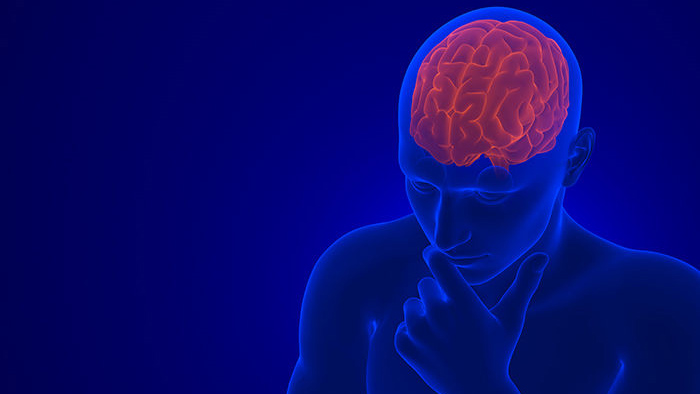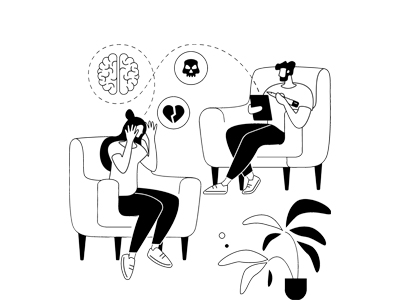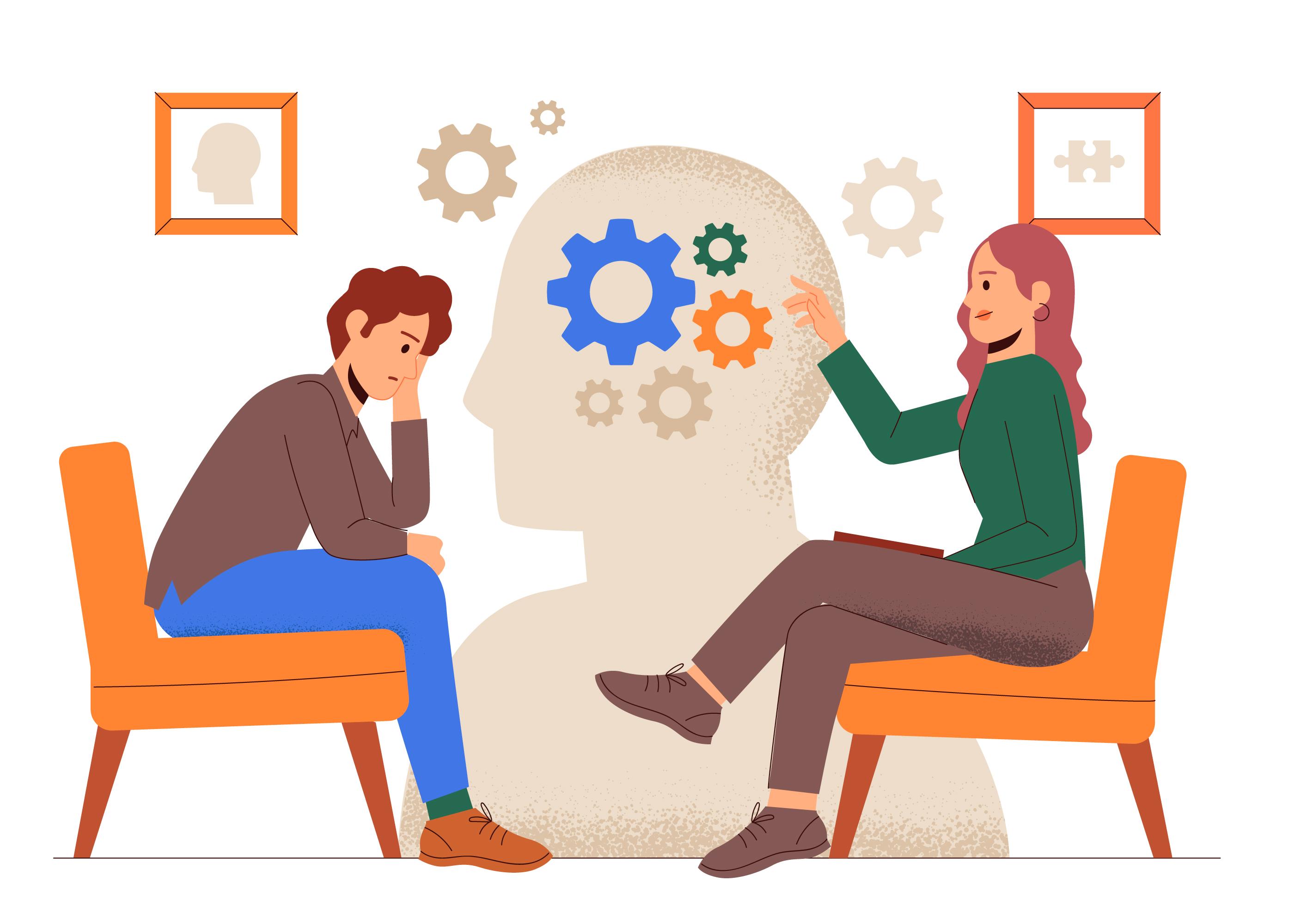Teach on PsyCourse. Become an Instructor today....Register now
Cognitive Behavioral Therapy (CBT) for Anxiety
By Apoorva MalikCognitive Behavioral Therapy (CBT) focuses on negative ideas or behavior and assists in recognizing and reshaping them. Cognitive Behavioural Therapy (CBT) for Anxiety will teach pupils how to overcome negative thoughts and enhance how they feel.
Description
Cognitive Behavioral Therapy focuses on modifying automatic negative thinking that can exacerbate emotional problems, sadness, and anxiety. These irrational negative ideas have a negative impact on one'smood.
Cognitive-behavioural therapy (CBT), is a short-term technique focused on improving the skills of anxiety patients and altering their emotional responses that are maladaptive in nature working through their thinking, behaving or both of the thoughts and behaviours. CBT aims to find out the association in the flow of events leading up to worry, anxiety and depression, a vicious circle involving their never-ending thoughts, crushing feelings, maladaptive behaviours and painful physical sensations, connecting and triggering each other. CBT thus disrupts the spiral causing the anxious thought in the first place thus restricting further trouble.
Cognitive Behavioural Therapy (CBT) for Anxiety will teach pupils how to overcome negative thoughts and enhance how they feel.
This course is intended for students who want to learn Cognitive Behavioural Therapy for Anxiety and get in-depth knowledge for personal and professional development. Students will learn about Anxiety, the Model of Anxiety, Situation Analysis, Cognitive errors, Behavioral Interventions, Panic Disorders, Main treatment components, Schemas: GAD, and the Assessment & Educating phase.
What is Anxiety?
Anxiety is the maladaptive, persistent, natural, excessive, intense fear, worry or apprehension about what’s going to happen in an anticipated or imagined situation. This course aims to touch upon the various instances one may feel anxious about and how can we tackle them.
Anxiety & Fear
Fear is associated with a well-defined threat whereas in anxiety, the threat that keeps one anxious may not be real; it could be even imagined or not well-defined. The symptoms may overlap and this course aims to draw a picture of how fear and anxiety could co-exist and explain the differences between them.
Clinician guidelines & Core features
- CBT is built based on the cognitive model describing how we perceive a situation or an event influences our thoughts automatically which in turn influences our emotional, physiological, and behavioural reactions.
- It is possible for one suffering from those psychological problems to learn to effectively cope with them and improve their quality of life.
This course aims to identify the distorted thoughts, evaluate them, understand the behaviour caused by those thoughts, the motive behind them, learn to solve the problems, and tackle difficult situations effectively in the future.
Cognitive assessments & Case formulation
- The importance of assessments will be clear when the clinician examines the patient suffering from anxiety and aims to diagnose the disorder to be treated, and their other co-morbid conditions.
- The technique employed analyses the behaviour, and the internal and external factors causing, exacerbating, and maintaining the behaviour.
This course aims to formulate the identified behaviour by thoroughly assessing the individual of their symptoms, problems, and specific diagnoses, stating the predisposing, precipitating, maintaining, and protective factors, testing and analysing the initial hypothesis, and modifying them accordingly.
Situation Analysis
- The course aims to convey how the context of the situation, how intense or frequent is the individual worrying about it, how long it lasts, and if there are any somatic symptoms or other deficits contributing to the situation are analysed.
- The internal and external triggers and the anticipated consequences of the symptoms are extrapolated.
- A history of physical and mental health is taken to understand the stressors.
Subtle defensive reactions
- The defensive reactions can be seen while attempting to modify or alter the long-held maladaptive thoughts and their associated behaviours.
- The course will highlight the defence mechanisms that could act as coping strategies and tuned to aid in the process of therapy.
Cognitive errors
Some of the distorted cognitions commonly identified to employ CBT include
- perceiving things in extremes termed as All-or-Nothing thinking,
- over-generalizing an individual incident and finding a series of coincidences,
- applying filters mentally to a small particular event,
- rejecting the positives in a situation or in a person,
- jumping to conclusions without proper evidence,
- exaggerating the setbacks,
- judging a person or a situation based on one’s emotions,
- using definitive “should” or “must” statements,
- judging a person or a situation and labelling them, and
- blaming oneself for all the undesired outcomes of a situation.
This course aims to touch upon cognitive errors and how to deal with them in CBT.
Summary Assessment
- Assessment is an ongoing process in any therapy and an effective alliance between the therapist and the client to employ the multifaceted process of assessment.
- The course will explain the summary assessment which includes the initial and final hypothesis, the therapy techniques admitted, the progress predicted, the changes observed, and the plans revised and followed.
Cognitive Interventions for anxiety
- The course is structured such that the nature of anxiety and the cognitive process involved are well understood.
- Then the subsequent techniques mentioned below will be briefed:
- Cognitive restructuring involves challenging and shifting attention from maladaptive thoughts.
- Behavioural strategies such as gradually exposing them to threatening situations and reassuring them.
- Methods to address the somatic symptoms using progressive muscle relaxation, breathing exercises, and meditation will also be taught in this course.
Cognitive interventions strategies
Multiple cognitive intervention strategies used in CBT will be introduced in the course.
- Cognitive restructuring or framing
- Guided discovery
- Successive approximation
- Scheduling activity
Behavioural interventions
Behavioural interventions in CBT will be covered in this course with an empirical orientation.
- Exposure therapy
- Recording the thoughts
- Relaxing using deep breathing techniques and meditation
- Role-playing
Panic disorder
This course will then move on to a brief about the waxing and waning panic disorder. It involves thoughts about triggers, avoiding them, and safeguarding from them by changing the familiar routines.
Main treatment components of CBT
The spotlight of the course then moves on the cognitive therapy, behavioural therapy, and therapy based on mindfulness, the three prime components of CBT
CBT for Generalized Anxiety Disorder (GAD)
CBT can be used to treat a range of mental disorders, and this course will touch on how Generalized Anxiety Disorder (GAD) could be treated using the following components of CBT.
- Forming a therapeutic alliance
- Self-monitoring
- Arousal reduction
- Cognitive restructuring
- Exposure therapy
- Worry management
- Review
- Relapse prevention
Assessments & Educating phase
The course then highlights the importance of assessments and educating the client about the further steps in proceeding with the therapy and how it can be handled once the sessions are completed.
Differentiating productive & unproductive worry
The course also aims to differentiate between productive worry that helps a client avoid danger and urges them to take the difficult steps and unproductive worry that becomes a threat if persists.
Cognitive restructuring of threat appraisals
Appraisals of threats are identified as one of the crucial cognitive processes involved and this course will attempt to cover how CBT aids in restructuring them.
Schemas: GAD
The course also covers the integrative approach of schema therapy where the maladaptive coping strategies, surrender, avoidance, and over-compensation are addressed. This integrates concepts of psychoanalysis, cognitive-behaviour therapy, emotion-focused therapy, and attachment theory.
Cognitive therapy for GAD-1
The course will also talk about the number of sessions required for the clients to treat GAD using cognitive therapy, and how it could be planned, spaced, and scheduled for a year. How the sessions could be followed-up, when they could be stopped and how the anxiety could be managed in stressful situations will also be covered.
Course Duration 03 Months
View More
What you'll learn
- How to deal with self-sabotaging patterns and overcome them.
- How to Handle Anxiety and Fear.
- Controlling Negative Thoughts and Emotions.
- To understand the models of Anxiety
- In-depth study of the Treatment components
- Main Treatment Components of CBT
- How to Deal with Negative thoughts and overcome them.
View More
Key Highlights
-
Online Flexible Lectures for Students
-
Expert faculties
-
Instant e-Certificate
-
RCI Registered Faculties
-
Virtual Audio-visual classes
-
Skill Oriented Course
-
Skill Based Training
Please login to rate and review the course.
Related Courses
By: Saumya Sharan
Psychopathology & Classification Systems- an introductory course
By: Prakriti Sharma
Psychological Abnormalities - an introductory course
By: Apoorva Malik
Certificate in Dialectical Behavior Therapy (DBT)
By: Apoorva Malik
Cognitive Behavioral Therapy (CBT) for Depression
Featured Courses
Learners liking following courses.

-for-Anxiety.jpg)




.jpg)
-for-Depression.jpg)
-for-Depression.jpg)










